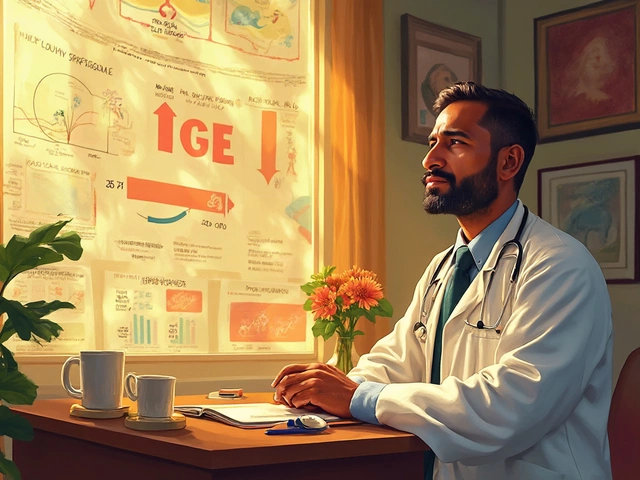IVF History: From Early Experiments to Modern Success Stories
If you’ve ever wondered how IVF became the go‑to option for many families, you’re not alone. The story starts in the 1930s with scientists trying to fertilise animal eggs outside the body. Those early experiments seemed like science‑fiction, but they laid the groundwork for something huge.
Fast forward to 1978, when the world met Louise Brown, the first baby born after in‑vitro fertilisation. That moment proved the concept could work in humans and sparked a wave of research, clinics, and hope for couples struggling with infertility.
Early Discoveries and the First Birth
In the 1950s, researchers in the UK and the US succeeded in creating fertilised eggs from rabbit and mouse eggs. The key breakthrough was figuring out how to keep the egg alive and healthy in a lab dish. Those findings taught scientists how to control temperature, pH, and nutrient supply—details that matter even today.The real game‑changer arrived when Dr. Robert Edwards and Dr. Patrick Steptoe combined egg retrieval with laparoscopic surgery. Their teamwork made it possible to collect mature eggs, fertilise them, and then place the embryo back into the uterus. Louise’s birth wasn’t just a medical milestone; it was a cultural shift that showed families there was another route to parenthood.
Technological Advances that Shaped IVF
After 1978, the field didn’t stand still. The 1990s brought intracytoplasmic sperm injection (ICSI), a technique where a single sperm is injected directly into an egg. ICSI opened doors for men with low sperm counts and turned many failing cycles into successes.
Next came embryo freezing, or cryopreservation. Instead of using a fresh embryo each cycle, clinics could store excess embryos for future attempts. This not only increased overall pregnancy rates but also reduced the number of stimulation cycles a woman needed.
More recently, pre‑implantation genetic testing (PGT) allows labs to check embryos for chromosomal abnormalities before transfer. Couples at risk for genetic disorders now have a safer, more targeted option, and overall miscarriage rates have dropped.
Throughout the 2000s, IVF success rates steadily climbed thanks to better hormonal protocols, refined lab equipment, and data‑driven approaches. In India, the first IVF clinic opened in 1986, and by the 2020s the country hosts over 550 IVF centres, serving millions of hopeful parents.
Today, IVF is no longer a rare, expensive miracle. Mini‑stim cycles, shared‑risk financing, and telehealth consultations have made it more accessible. While costs can still be high, many couples now consider it a realistic part of family planning rather than a last‑ditch effort.Looking ahead, researchers are exploring gene editing, artificial gametes, and improved culture media that could boost rates even further. The journey from a lab mouse egg to a healthy baby has been long, but each step has brought us closer to safer, more effective fertility care.
So whether you’re just curious or actively planning a family, understanding IVF’s history gives you perspective on where the science started and where it’s headed. The past shows us why today’s options are possible, and it hints at the breakthroughs still on the horizon.

Discovering the Legacy of the World's First IVF Baby
The world of IVF changed forever with the birth of Louise Brown, the first baby born through in vitro fertilization. This article explores the significance of her birth, its impact on fertility treatments, and how it paved the way for millions of families. Readers will also find fascinating insights into the evolving technology and societal changes surrounding IVF. Through key milestones and expert insights, learn how the story of the most famous IVF baby continues to inspire advancements in reproductive medicine.

Generations of IVF: Exploring Fertility in the First IVF Children
With the advent of IVF technology over four decades ago, researchers and families alike are curious if the first generation IVF babies have carried the legacy of fertility into the next generation. This exploration delves into the stories and statistics of IVF-marked beginnings and follows through to see if these individuals have yet started families of their own, contributing to a growing understanding of fertility science. Tackling both the science and the personal narratives, this overview presents an insightful look at the continuing impact of reproductive technology. Readers will gain a clearer perspective on the hereditary implications of IVF and the evolving nature of human reproduction.

How to Qualify for Ozempic at an Online Pharmacy
Jan, 24 2025

Ozempic and Metformin: How Much Weight Can You Lose?
Feb, 17 2025

Strongest Drugs for Nerve Pain: What Really Works?
May, 22 2025

